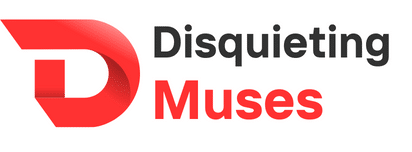What Techniques Can Enhance Fast-Twitch Muscle Response in Table Tennis Players?

Table tennis, contrary to appearances, isn’t just a leisurely game played in basements and rec rooms. It’s a serious sport requiring quick reflexes, strength, and endurance. You need top-notch physical conditioning, especially in your arm and leg muscles. One critical factor for success in this game is the fast-twitch muscle response. It’s the ability to make quick, explosive movements, crucial for delivering powerful topspin shots and rapidly changing direction during play. But how can table tennis players enhance this key performance element? Let’s delve into research findings and expert advice to find out.
Incorporating Strength Training
Strength training is essential for table tennis players. It develops fast-twitch muscle fibers, which improve your performance by allowing you to exert more force more quickly. A robust strength training regimen will not only boost your power but also enhance your ability to execute a topspin, a critical skill in the game.
Additional reading : What Are the Best Breathing Techniques for Free-Divers to Improve Lung Capacity?
Scientific studies confirm the benefits of strength training for table tennis players. A PubMed study found that players who engaged in regular strength training showed significant improvements in their game performance, particularly in hitting speed and topspin execution.
Strength training should target the muscles most used in table tennis, including those in the arms, shoulders, and core. Compound exercises, which work multiple muscle groups simultaneously, are particularly beneficial. Examples include squats, deadlifts, and bench presses. Of course, you should always consult a qualified trainer to ensure correct form and prevent injuries.
Also to read : How to Use Isokinetic Training Devices for Rehabilitation in ACL Injuries?
Enhancing Reaction Time
Table tennis is a fast-paced game that requires quick reactions. Your ability to respond instantly to your opponent’s actions can make the difference between victory and defeat. Therefore, enhancing your reaction time is another way to boost your fast-twitch muscle response.
Research on this topic is abundant. A Google Scholar search yields numerous studies indicating that regular practice of specific drills can improve reaction times. These drills often involve reacting to visual stimuli, such as the appearance or movement of a ball.
Remember, practice is the key to improvement. By regularly performing exercises designed to enhance reaction time, you can train your fast-twitch muscles to respond more rapidly, enhancing your ability to play high-speed shots and return the ball with precision.
Understanding the Role of Nutrition
Nutrition plays a critical role in sports performance. For table tennis players aiming to improve their fast-twitch muscle response, a well-balanced diet is crucial. This should include adequate protein to support muscle repair and growth, carbohydrates for energy, and healthy fats for overall health.
A study in PubMed supports this. It found that athletes’ nutrition significantly affects their muscles’ response and recovery time. Consuming sufficient nutrients before, during, and after training or a game can enhance your fast-twitch muscle response and improve your overall performance.
It’s also worth considering supplements, such as creatine, which has been shown to enhance muscle strength and power. However, always consult a healthcare professional before starting any supplementation regimen.
Implementing Mental Training
Believe it or not, your mental state can influence your fast-twitch muscle response. Mental training techniques, such as visualization and relaxation exercises, can improve your muscle control and reaction time, enhancing your table tennis performance.
Scientific evidence supports this claim. A study on Google Scholar found that athletes who practiced mental training regularly exhibited better game performance, including enhanced fast-twitch muscle response.
Incorporating mental training into your routine is simple. Spend a few minutes each day visualizing successful game scenarios or performing relaxation exercises. Over time, you’ll likely notice improvements in your performance.
Adapting Game Techniques
The last piece of the puzzle is adapting your game techniques. By mastering specific moves and strategies in table tennis, you can leverage your fast-twitch muscle response to your advantage.
One essential technique is the topspin shot. Mastering this move can significantly improve your game performance. This maneuver requires a rapid arm movement, engaging your fast-twitch muscle fibers.
Another critical technique is quick footwork. Being able to move swiftly and change direction rapidly can give you a significant advantage in the game. This skill also relies heavily on your fast-twitch muscle response.
Both these techniques can be improved through practice. Consider working with a coach or trainer to refine your skills and elevate your game.
In conclusion, enhancing your fast-twitch muscle response can significantly improve your table tennis performance. By incorporating strength training, improving your reaction time, optimizing your nutrition, implementing mental training, and adapting your game techniques, you can boost your power, speed, and agility, giving you the edge in this fast-paced, skill-demanding sport.
Integrating High-Intensity Interval Training
High-intensity interval training (HIIT) is a potent resource for table tennis players seeking to boost their fast-twitch muscle response. This form of exercise alternates between short periods of intense activity and longer periods of less intense recovery or rest. It’s designed to push the body to its limits, thereby stimulating the development of fast-twitch muscle fibers.
According to a study on PubMed, HIIT can significantly improve an athlete’s muscle power and speed – two characteristics heavily reliant on fast-twitch fibers. This training form also enhances cardiovascular fitness, which is crucial for maintaining high-intensity play during a table tennis match.
HIIT workouts for table tennis players could include activities such as sprinting, cycling, or circuit training involving compound exercises like squats and deadlifts. These exercises engage the core, arm, and leg muscles, which are crucial for table tennis play.
Incorporating HIIT into your training routine can be challenging, given the high intensity of the workouts. It’s advisable to start slow and gradually increase the intensity and duration of the workouts. Of course, it’s always critical to consult with a fitness professional or sports med expert before embarking on any new training regimen.
Utilizing Technology for Training
In our technologically advanced age, table tennis players can leverage technology for training. Using tech tools, players can monitor their progress, gain insights into their performance, and tailor their training to enhance their fast-twitch muscle response.
One popular tech tool is the wearable fitness tracker. According to a study found on Google Scholar, using a fitness tracker can help athletes monitor their heart rate, calorie burn, and workout intensity, thereby allowing them to optimize their training for best results.
Another valuable tech tool is the reaction time app. These apps are designed to improve your reaction time by providing visual stimuli that you have to respond to as quickly as possible. Over time, these exercises can enhance your fast-twitch muscle response, contributing to better performance during match play.
Other tech tools include video analysis software, which allows you to scrutinize your playing techniques, and virtual reality devices, which provide a realistic training environment. Both these tools can be instrumental in enhancing your fast-twitch muscle response.
In conclusion, by incorporating strength training, enhancing reaction time, understanding the role of nutrition, implementing mental training, adapting game techniques, integrating high-intensity interval training, and utilizing technology for training, you can significantly enhance your fast-twitch muscle response. This comprehensive approach will equip you with the power, speed, and agility necessary to excel in the fast-paced, demanding sport of table tennis. Remember, consistent effort and dedication are key in this journey to improved performance.
